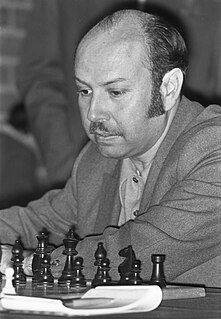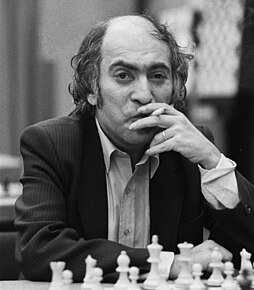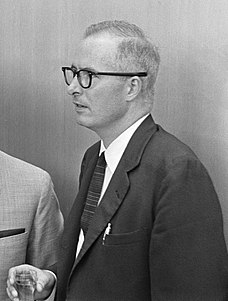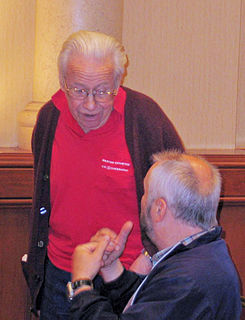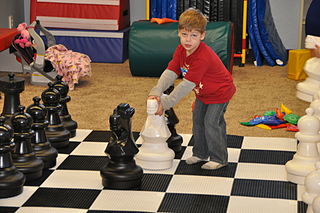| Larry Evans | |
|---|---|
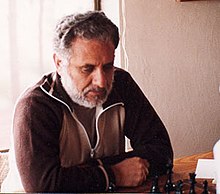 | |
| Full name | Larry Melvyn Evans |
| Country | United States |
| Born | March 22, 1932 New York, New York |
| Died | November 15, 2010 (aged 78) Reno, Nevada |
| Title | Grandmaster (1957) |
| Peak rating | 2555 (January 1977) |
Larry Melvyn Evans (March 22, 1932 – November 15, 2010) was an American chess grandmaster, author, and journalist. He won or shared the U.S. Chess Championship five times and the U.S. Open Chess Championship four times. He wrote a long-running syndicated chess column and wrote or co-wrote more than twenty books on chess.

Chess is a two-player strategy board game played on a chessboard, a checkered gameboard with 64 squares arranged in an 8×8 grid. The game is played by millions of people worldwide. Chess is believed to be derived from the Indian game chaturanga some time before the 7th century. Chaturanga is also the likely ancestor of the Eastern strategy games xiangqi, janggi, and shogi. Chess reached Europe by the 9th century, due to the Umayyad conquest of Hispania. The pieces assumed their current powers in Spain in the late 15th century with the introduction of "Mad Queen Chess"; the modern rules were standardized in the 19th century.
Grandmaster (GM) is a title awarded to chess players by the world chess organization FIDE. Apart from World Champion, Grandmaster is the highest title a chess player can attain.

A journalist is a person who collects, writes, or distributes news or other current information to the public. A journalist's work is called journalism. A journalist can work with general issues or specialize in certain issues. However, most journalists tend to specialize, and by cooperating with other journalists, produce journals that span many topics. For example, a sports journalist covers news within the world of sports, but this journalist may be a part of a newspaper that covers many different topics.
Contents
- Chess career
- Early years
- U.S. champion
- Grandmaster
- Olympiad successes
- Best international results
- Working with Bobby Fischer
- Chess journalism
- Criticism of writings
- Death
- Books
- Notable games
- References
- External links
He is not to be confused with Larry David Evans (b. 1952), another American chessmaster who was active in the 1970s and 1980s and achieved the International Master title.





